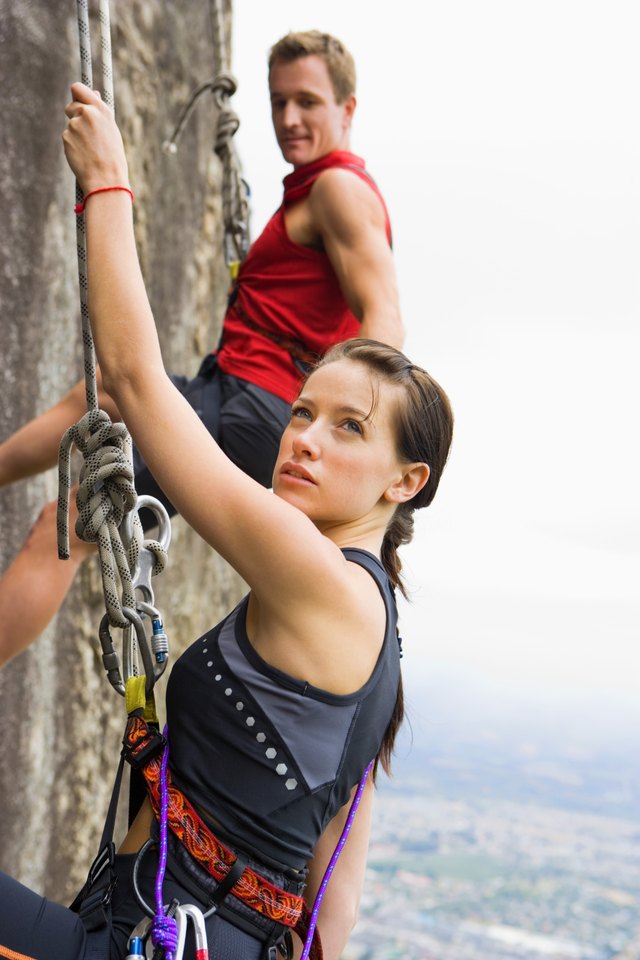What Parts of the Body Does Rock Climbing Tone?

A steady schedule of visits to the gym and even workouts outside can feel stagnant over time, particularly after you've hit a workout plateau. If you're feeling restless with your workout, why not shake things up with a round at your local rock gym or an outdoor climb in a mountain range or canyon? Rock climbing makes for serious physical activity, and it will take your mind, body and spirit to conquer the hardest climbs. Still skeptical? Check out the ways in which climbing can tone your muscles for a stronger body and better endurance.
Arms and Chest
Your arms get a major workout when you're scaling a rock wall, whether indoor or outdoor. Strong forearms are a must, because you'll be drawing power from the muscles that run from your wrist to your elbow as leverage to pull up to the next ledge or foothold. But it's not your forearms doing all the work; your chest gets a workout as you press down into those larger muscles to give your forearms even more power. Whether you're scaling an artificial wall or searching a rock face for a stable spot, your forearms, biceps, and triceps are all getting a workout.
Back and Shoulders
A novice rock climber usually thinks that climbing is all about the arms, but that's a rookie mistake. The muscles in your arms are fairly small when compared to the muscles in your back and shoulders. Therefore, it's easier to climb when you engage all of your upper body to help move you up the wall, the rock face, or the ledge. An experienced rock climber taking on a climb like Zoroaster Temple in Grand Canyon National Park will need the use of his back and shoulders to help hoist his body up the steep rock face. If your technique is good, you should feel sore up your upper back and shoulders the day after a climb, proof that you're toning those larger muscle groups.
Core
Any seasoned climber can tell you that a sloppy core makes for a sloppier climb. That's because your core -- the muscles that wrap around your midsection -- are responsible for stabilizing the rest of your body. Because your core needs to stay engaged for the whole climb, you'll find that climbing has positive benefits for your abs, obliques and even your lower back. Each time you pull up on another hold or ledge, you're engaging those muscles to draw power.
Lower Body
Although it's true that your arms do more work in rock climbing than an average sport, your legs aren't left in the dust. In fact, rock climbing can help tone your thighs and your glutes, especially when you're using them to give leverage to your upper-body movements. What's more, rock climbing is excellent flexibility work, because you'll often have to stretch your lower body to get the most secure position, especially when tackling more difficult climbs like Excalibur in Grand Canyon National Park -- at 160 feet and with footholds that can be spread thin, it's definitely a challenge for your lower body.
References
- Wellness MA: Conditioning for Rock Climbing and Hiking
- Physical Education Action Plans: Challenges to Promote Activity at School; Charmain Sutherland
- All Grand Canyon: Climbing/Mountaineering
Writer Bio
Kay Ireland specializes in health, fitness and lifestyle topics. She is a support worker in the neonatal intensive care and antepartum units of her local hospital and recently became a certified group fitness instructor.
